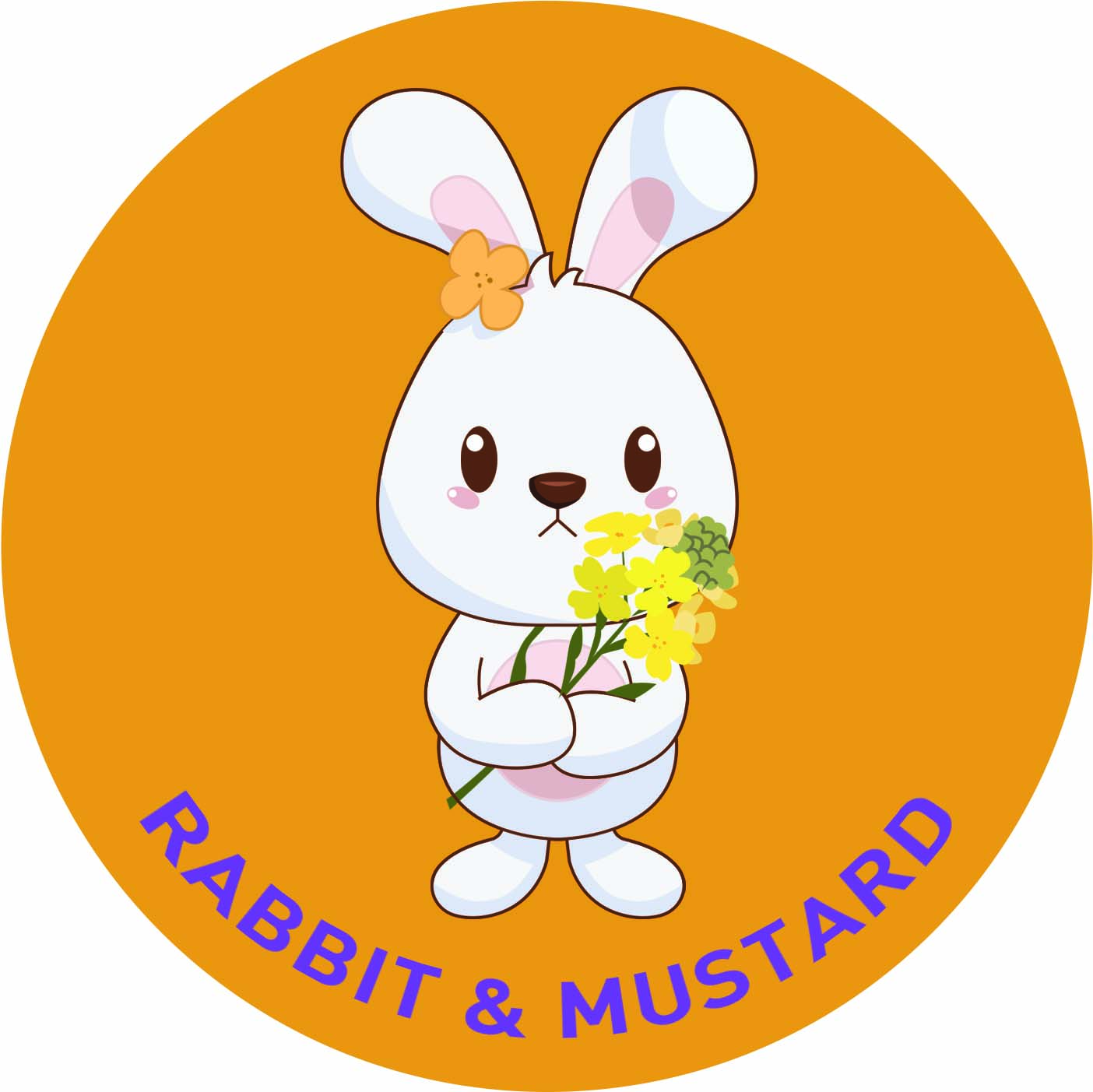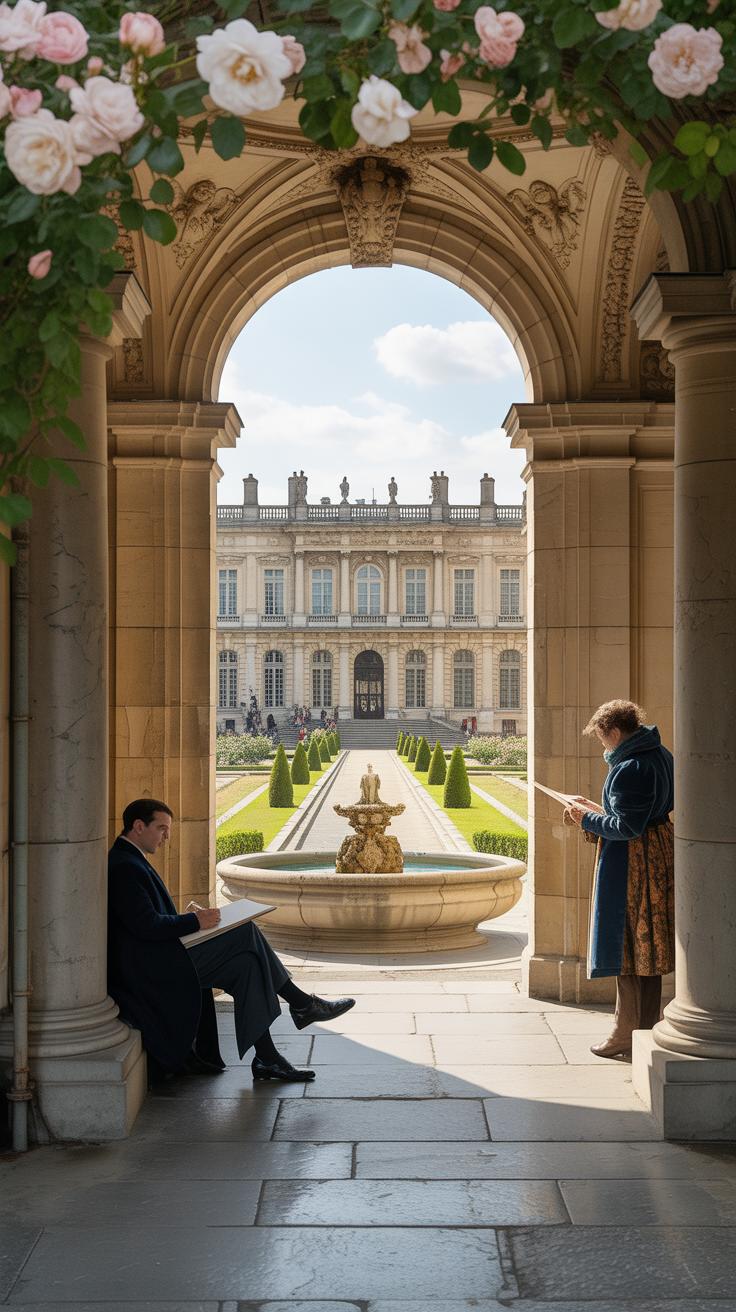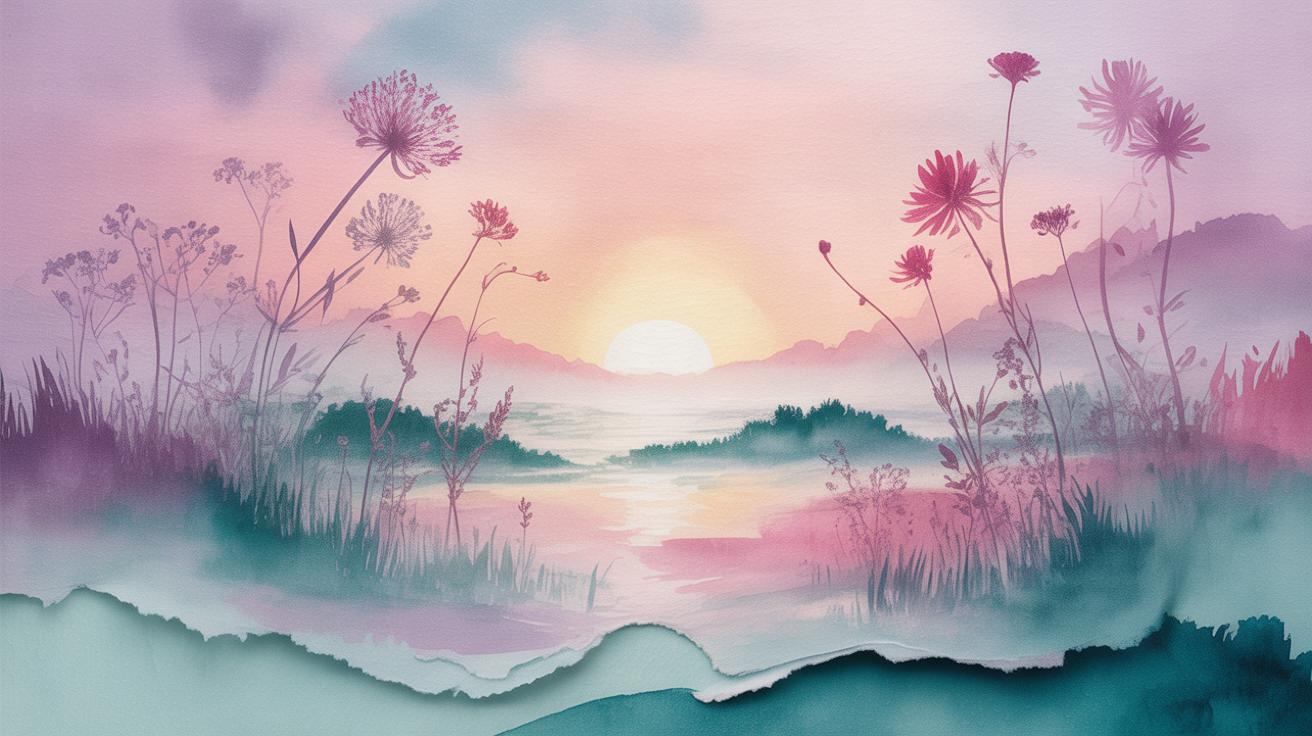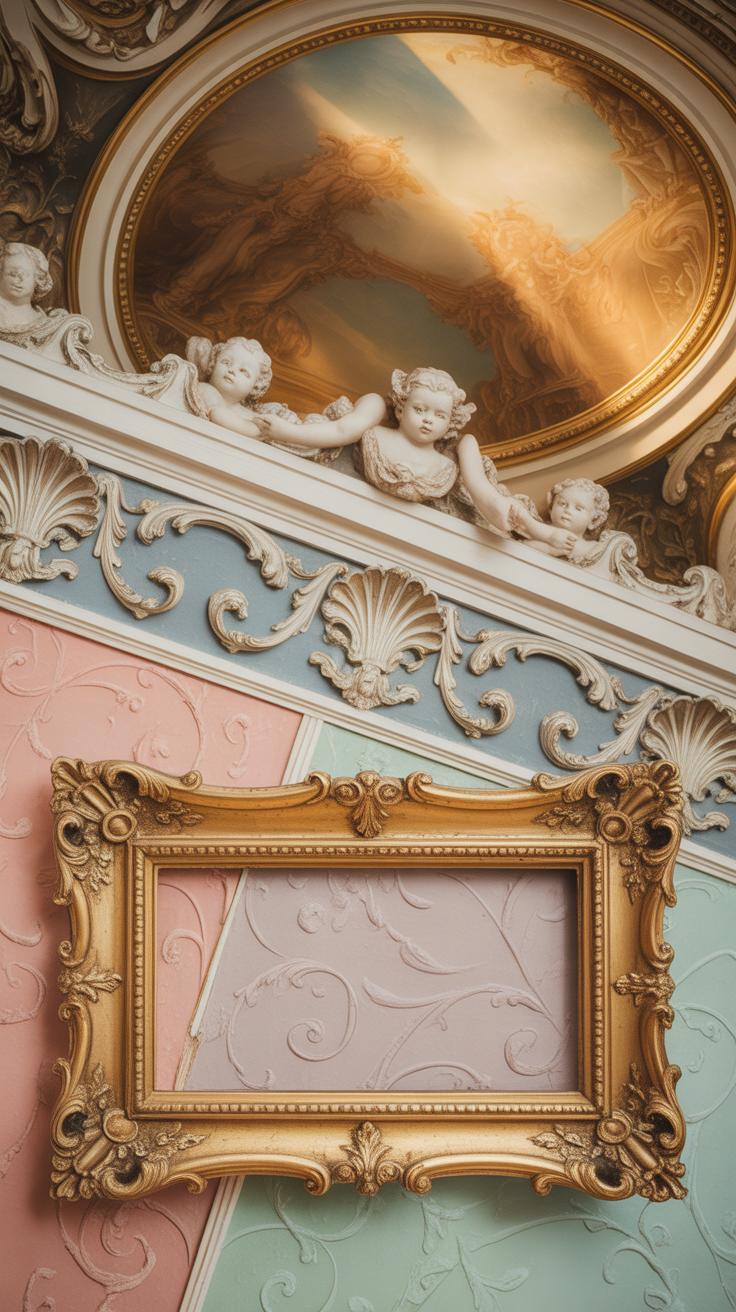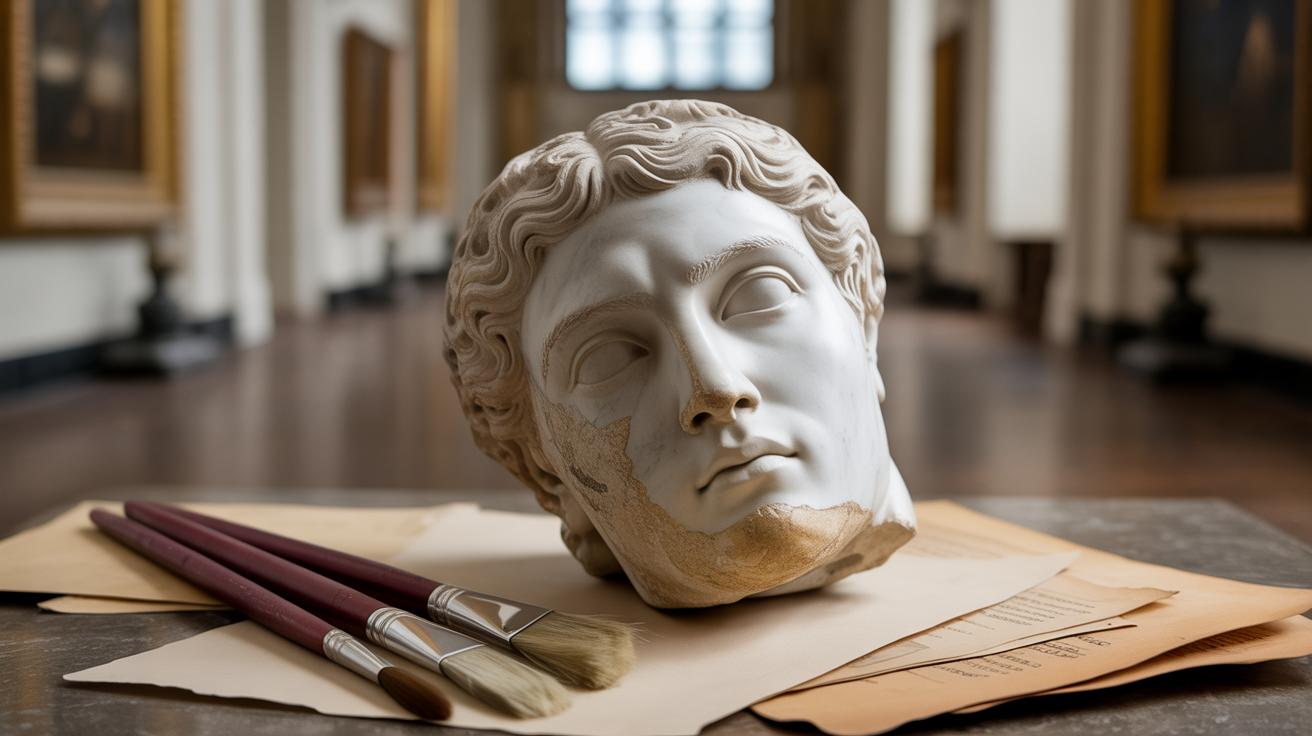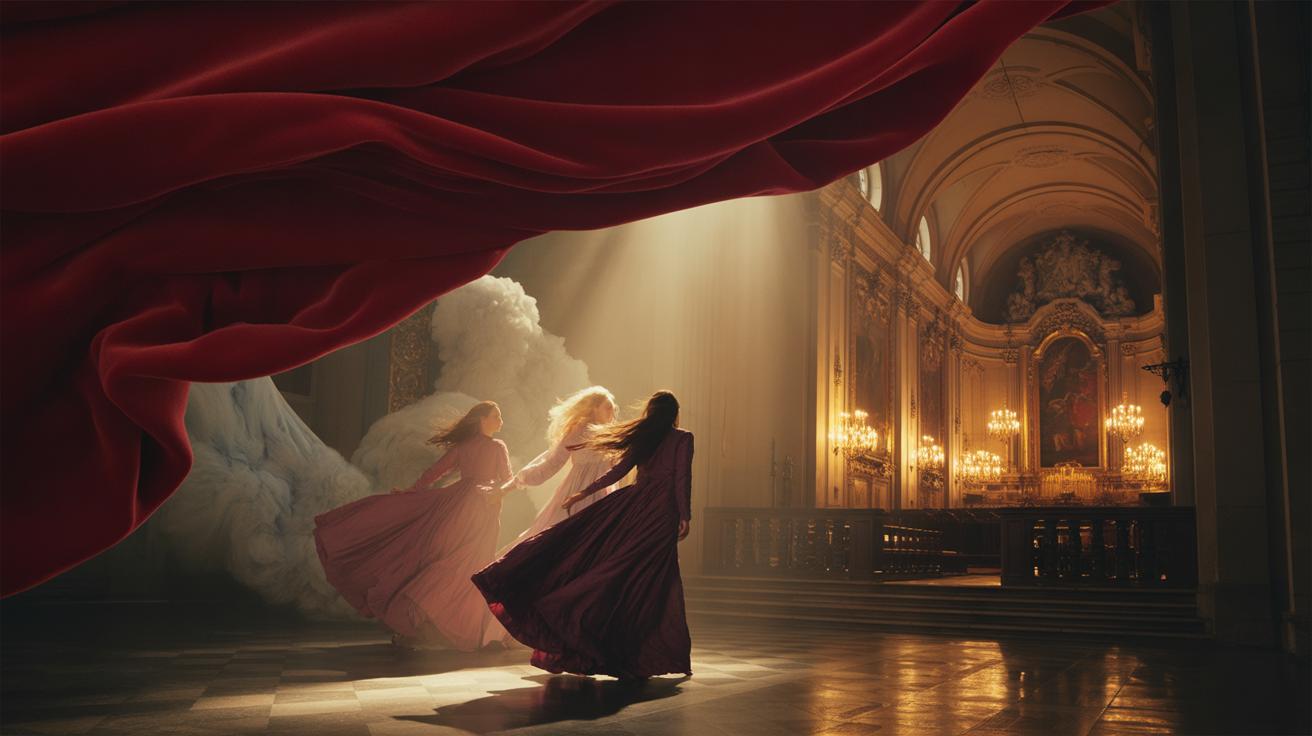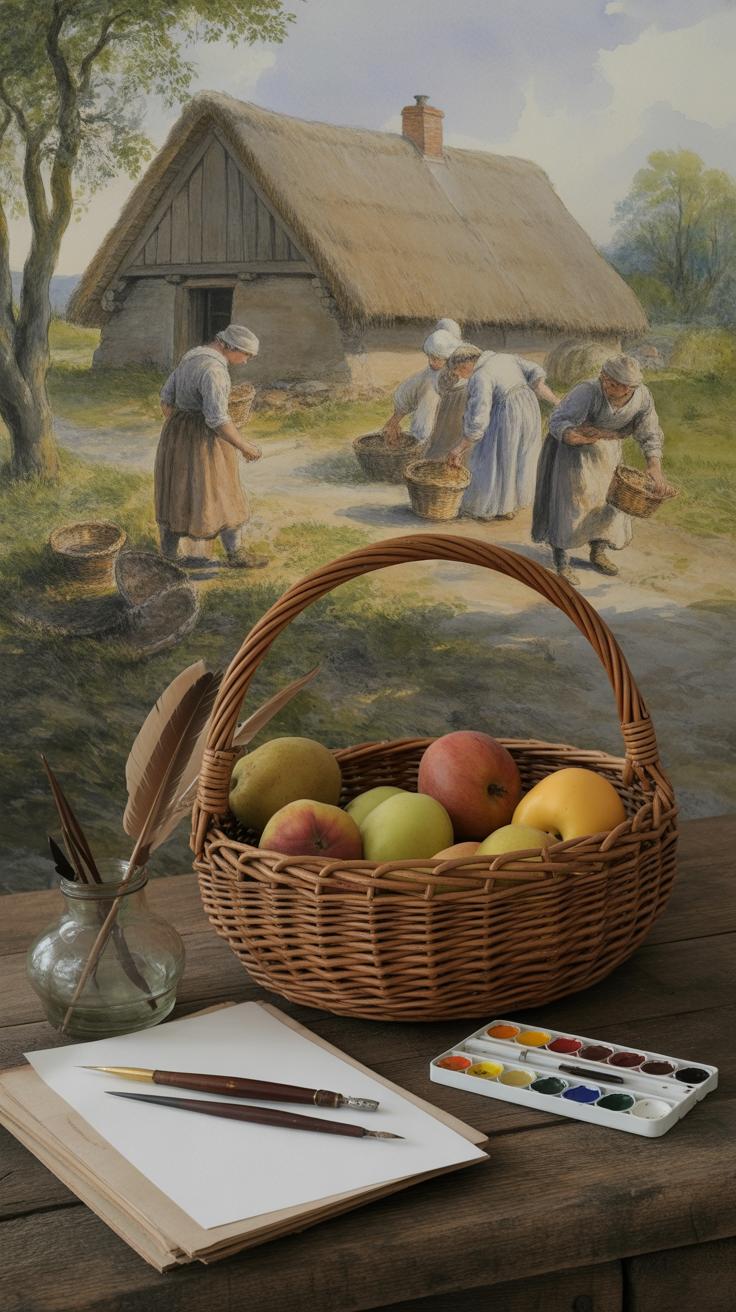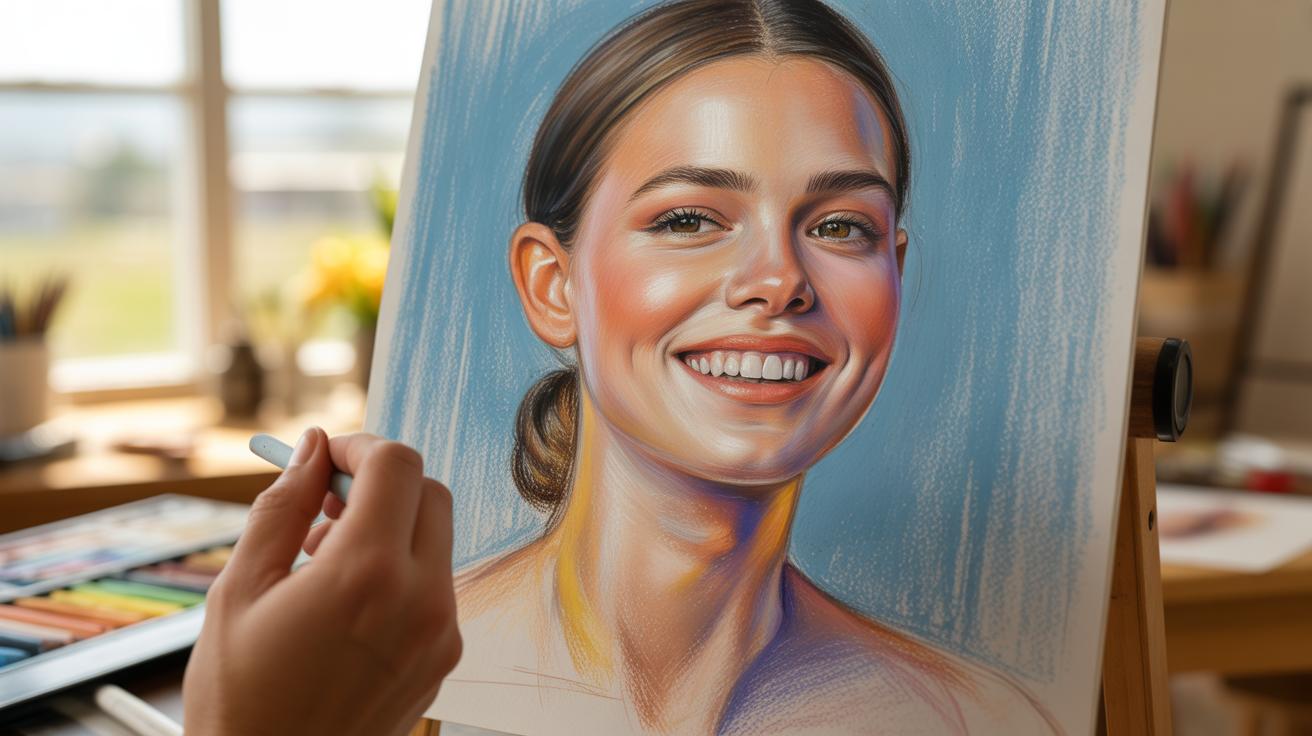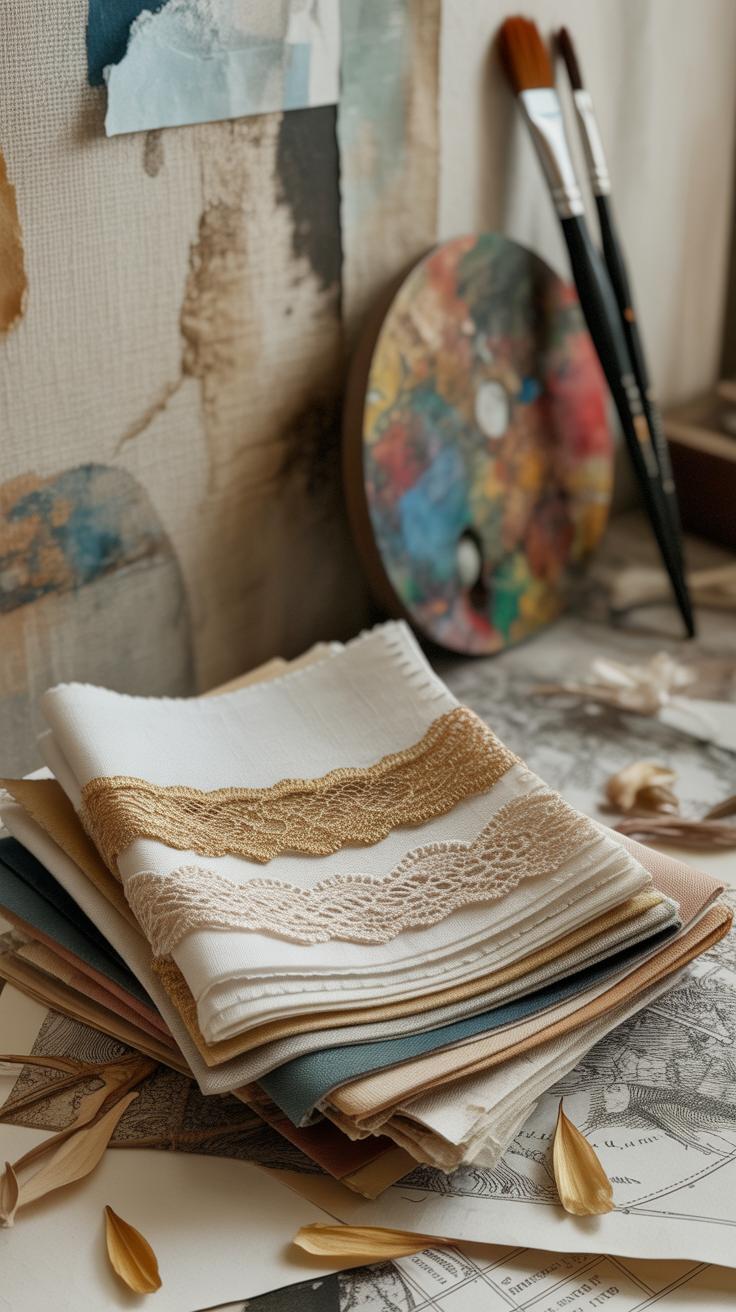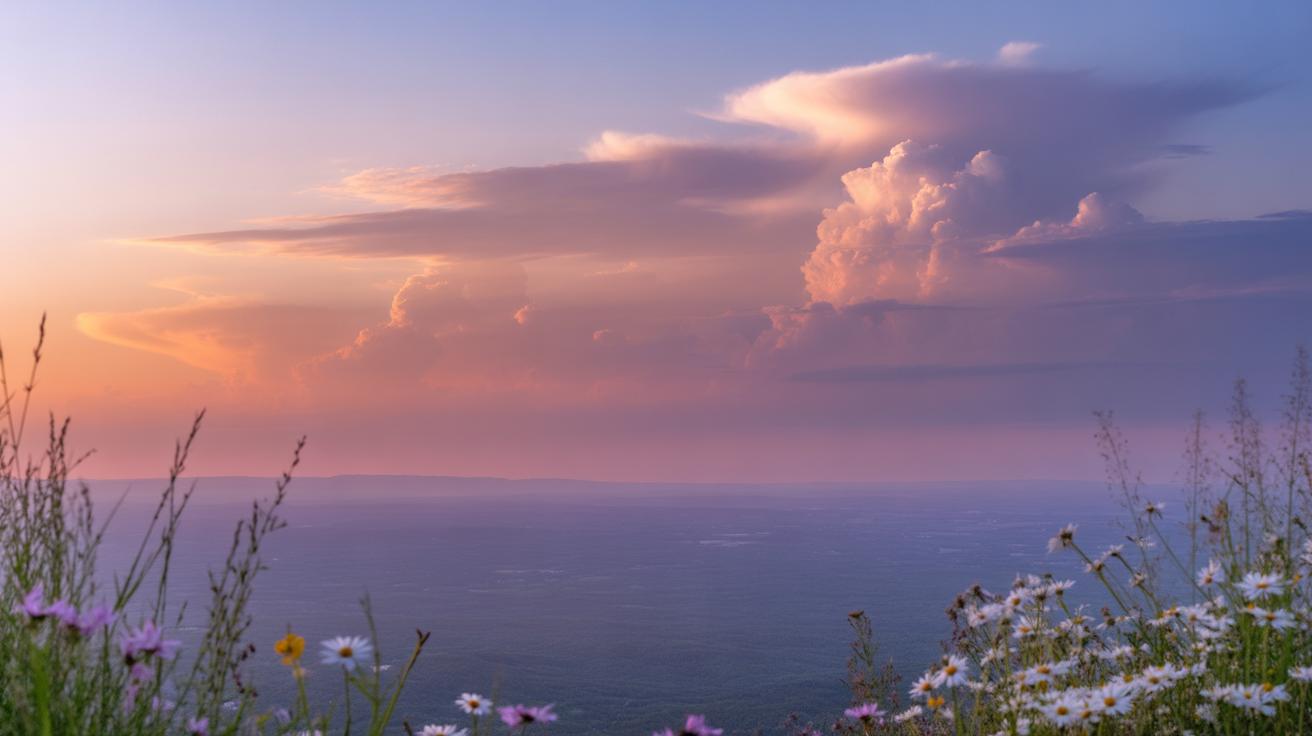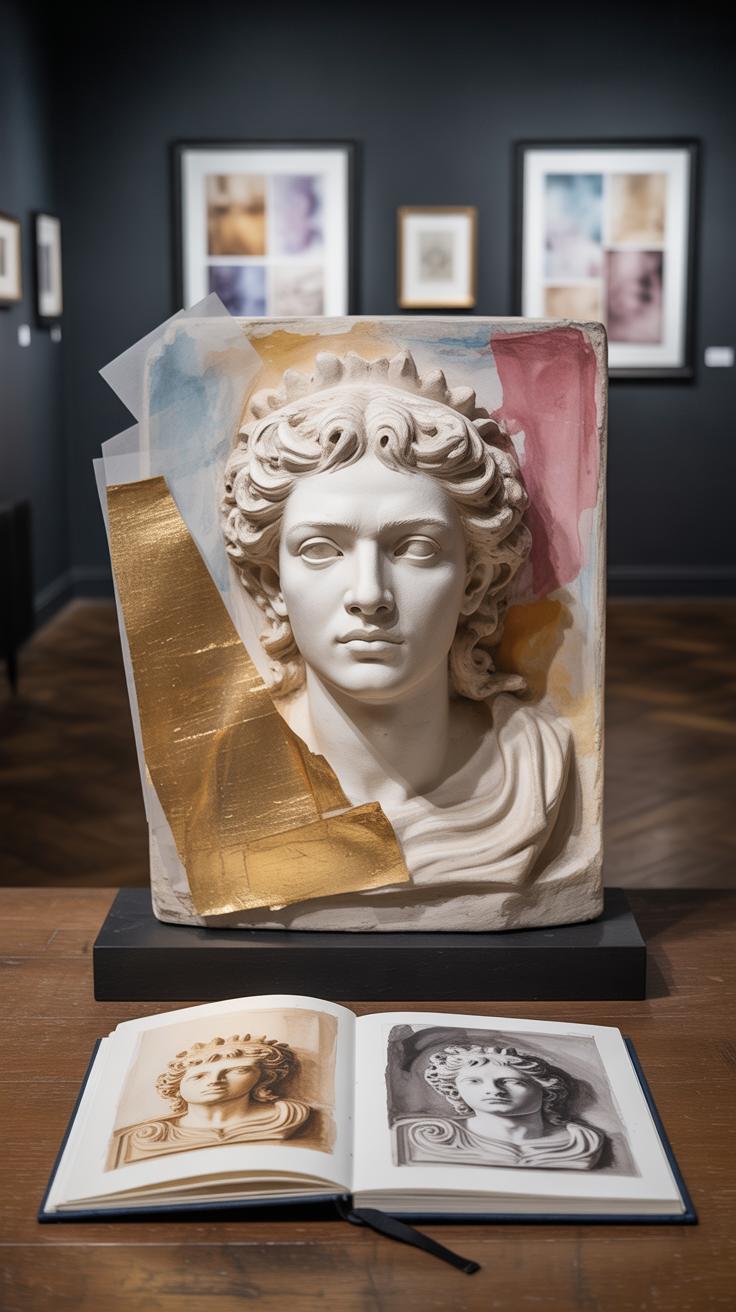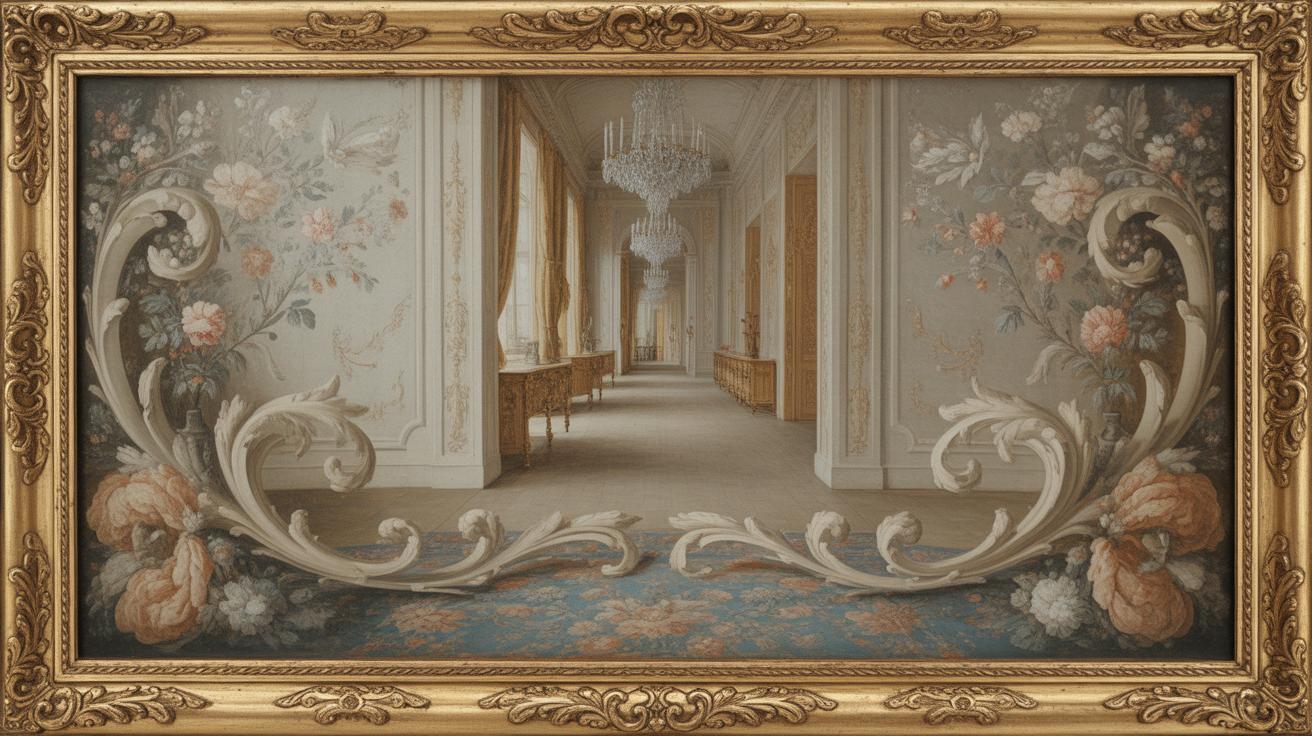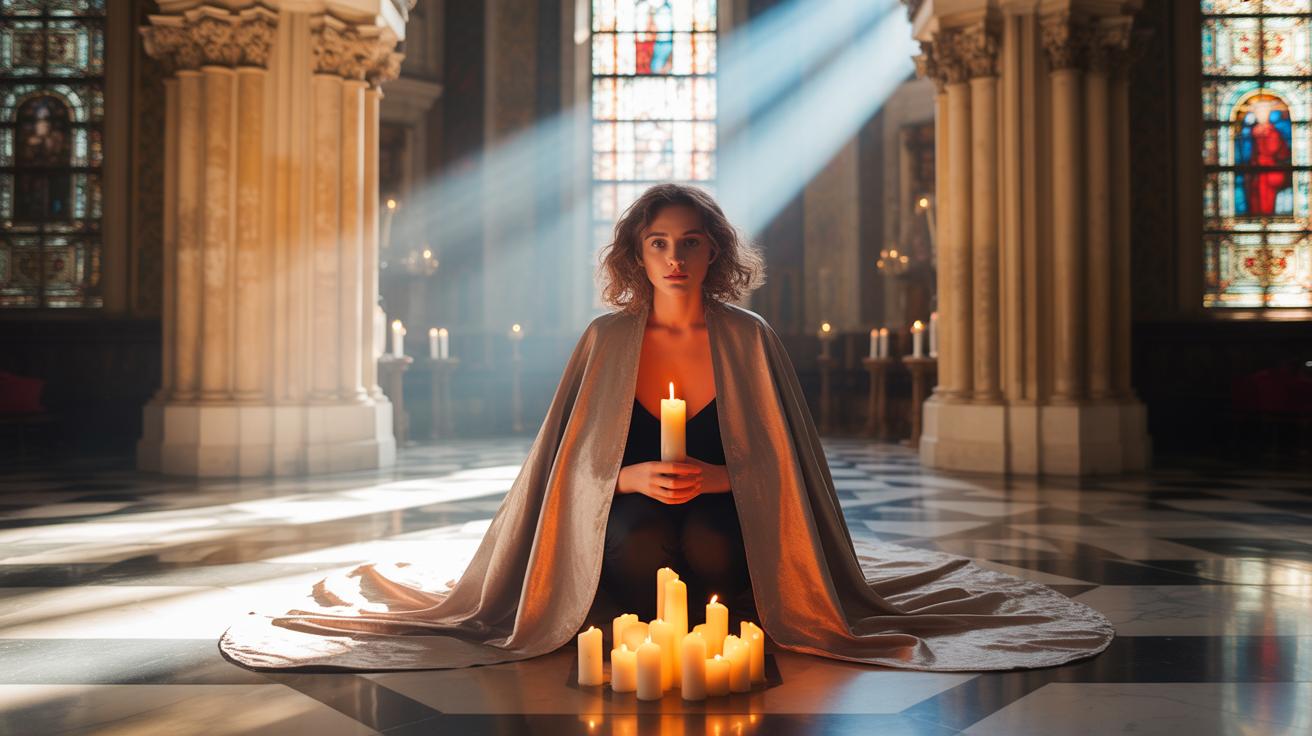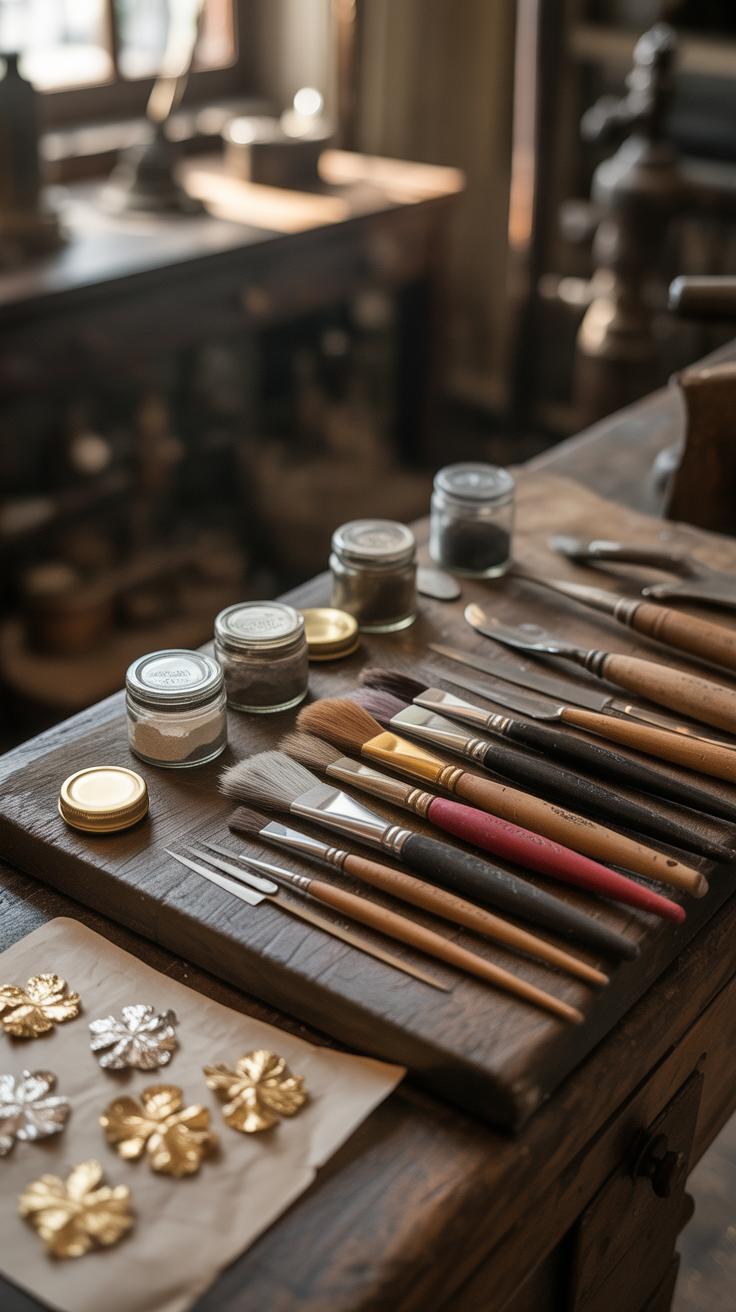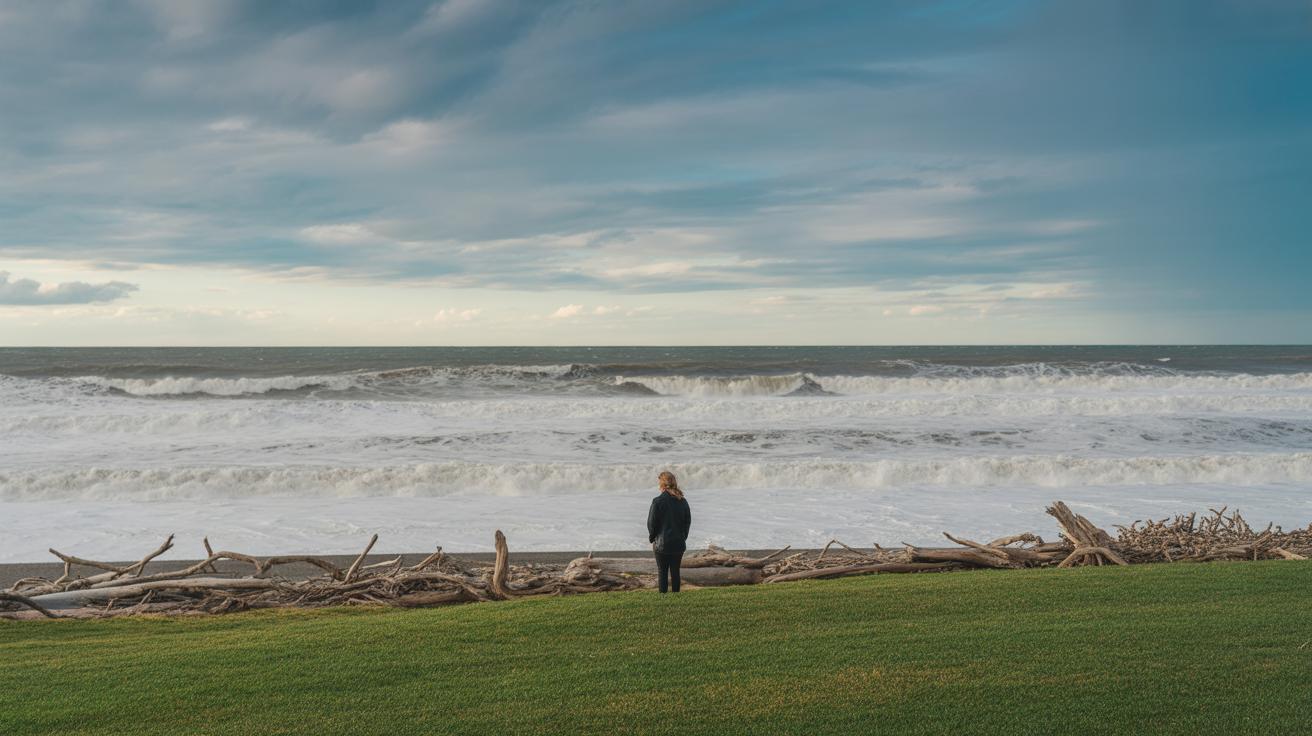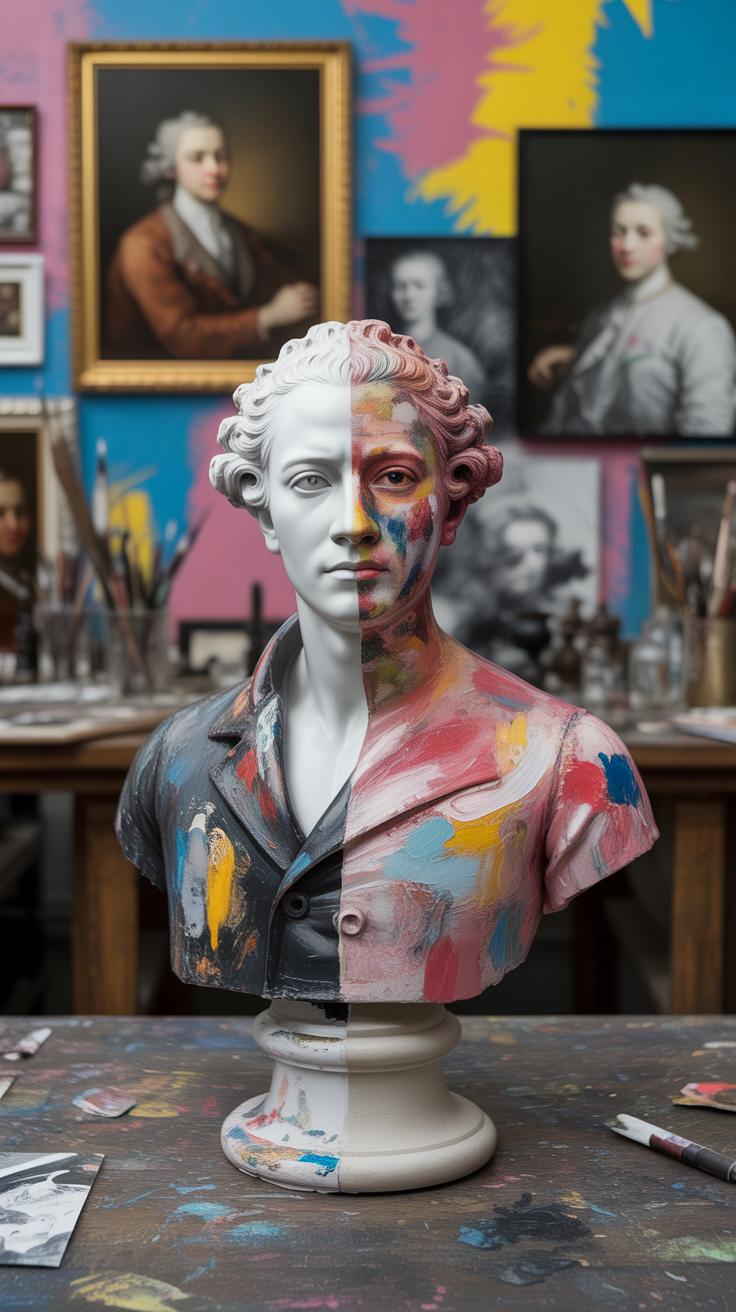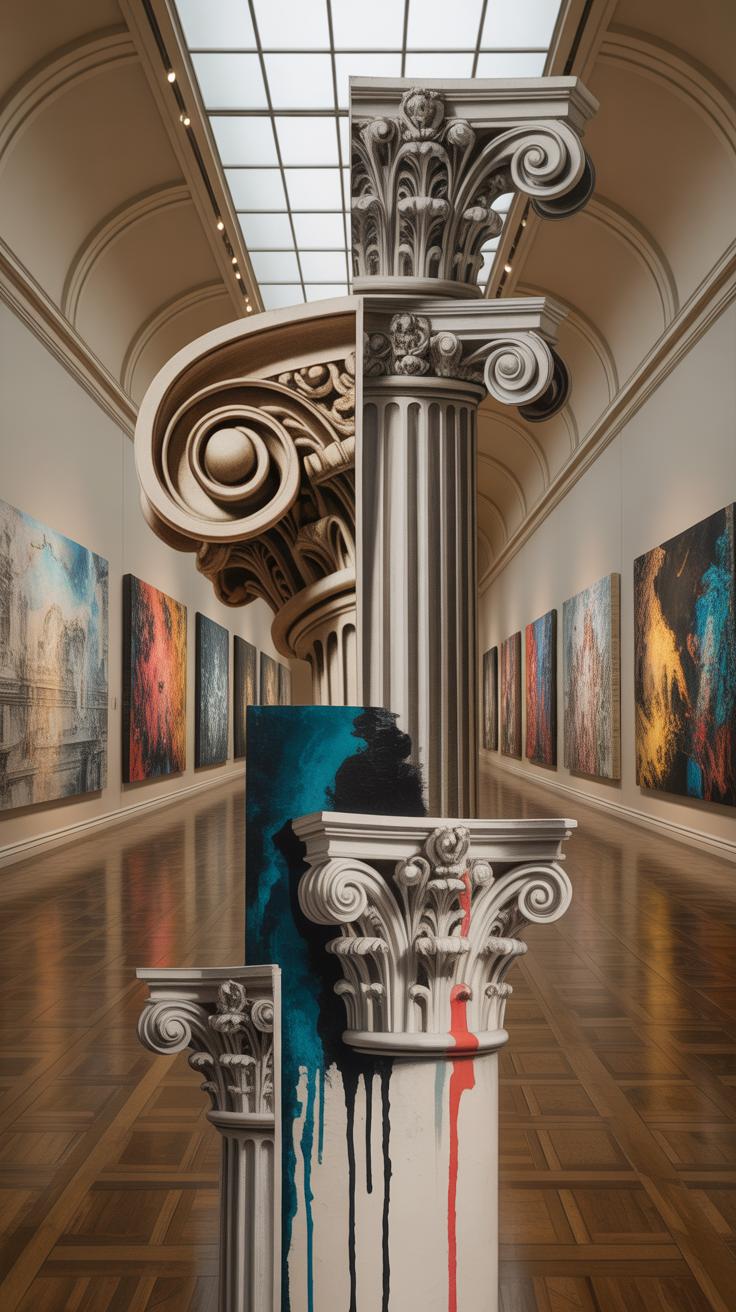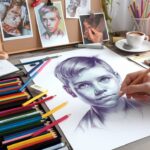
Artistic Trends Of The 18th Century Explored In Mixed Media
Introduction
The 18th century was a time of change in the art world. It saw the rise of styles like Baroque, Rococo, and Neoclassicism. These movements introduced new ideas about beauty, nature, and society. Artists began to explore personal and emotional themes, breaking away from traditional rules. Art became more about feeling and storytelling.
Mixed media art today combines materials like paint, paper, cloth, and found objects. It helps us see the 18th-century styles in new ways. By mixing different media, artists create rich images that tell stories of the past with fresh eyes. This article will take you through the history, styles, and how mixed media can bring 18th-century art to life for your own creative projects.
The Setting of 18th Century Art
Political and Social Changes
The 18th century was marked by shifts that deeply altered the cultural landscape of Europe, especially in art. When Louis XIV died in 1715, the rigid and grandiose style favored during his reign began to lose ground. The subsequent Regency period introduced a sense of lightness and playfulness after decades of strict formality. France, in particular, experienced a loosening of social conventions, which influenced artistic themes to become more intimate and personal.
This period’s political instability, coupled with the rise of the bourgeoisie, meant artists responded to new audiences with different tastes. Artists no longer spoke only to the aristocracy; they began addressing a wider public. This created a push towards more decorative and approachable styles. You can almost feel this tension between tradition and change in the works from this time.
Role of Art in Society
Art did more than decorate palaces or churches during the 18th century. It served as a mirror to society’s evolving values. With social gatherings and salons becoming popular, paintings, sculptures, and decorative arts functioned as both conversation starters and status symbols.
People wanted art that reflected their lifestyle—elegant yet relaxed, sophisticated but not intimidating. This demand shaped artistic production substantially. You might wonder how much of this shift was genuine cultural change versus artists simply catering to market pressures. Either way, art became a tool to express identity and taste as much as political power or religious devotion.
Understanding this context is key to appreciating the styles that followed, like Baroque’s drama and Rococo’s whimsy. Both are products of these complex social and political undercurrents, though they diverged quite a bit in mood and message.
Baroque and Rococo Art Styles
Features of Baroque Art
You can often spot Baroque art by its dramatic flair. Its use of light isn’t subtle; it’s bold, almost theatrical, with sharp contrasts that pull your eye across the canvas or sculpture. Artists seemed determined to catch fleeting emotions, capturing tension, movement, and intensity all at once. Think of Caravaggio’s paintings, where light slices through darkness, creating almost tangible shadows that seem to breathe. The figures often appear caught mid-action, frozen in moments charged with passion or turmoil. This wasn’t just about showing a scene—it was about pulling you into it, making you feel the weight of the moment.
Baroque art doesn’t shy away from complexity either. Swirling forms, twisted bodies, and expressive faces reflect a world in motion, sometimes chaotic, sometimes painfully beautiful. Imagine Bernini’s sculptures; the energy feels almost unbearable, like the marble might crack from the strain of emotion packed into every inch.
Rococo’s Lighter Approach
Then there’s Rococo, which feels like a breath of fresh air compared to its heavier predecessor. It leans into playfulness and lightness, both in theme and appearance. Pastels replace the dark shadows of Baroque, and the focus shifts to cozy, intimate scenes—aristocratic leisure, flirtation, and fantasy. The art feels almost decorative, designed to charm rather than overwhelm.
Rococo’s subjects are less about grand gestures or intense feelings. Instead, there’s a softness, a casual elegance that invites you closer rather than demanding your full attention. Think Fragonard’s light-hearted depictions of love and nature, or Watteau’s fêtes galantes, where people glide through gardens in a dreamlike haze. The emphasis on ornamentation, delicate curves, and intricate detail suggests a world more concerned with beauty and enjoyment than with weightiness or drama.
The contrast between these two styles is striking but also a bit puzzling. While Baroque seems urgent, Rococo relaxes into charm. Yet both share a desire to engage viewers—Baroque through emotions that grip, Rococo through atmospheres that invite you to linger. Does one truly replace the other? Or do they coexist as different ways of telling a story about human experience in the 18th century? Your interpretation might vary, which makes exploring them all the more interesting.
Introduction to Neoclassicism
Emergence of Neoclassicism
Neoclassicism rose as a clear reaction against the excesses of Baroque and Rococo styles. Those earlier movements, with their dramatic flair and ornate decoration, felt almost overwhelming to many by the mid-18th century. People—artists and patrons alike—began looking back, not forward, for inspiration. The rediscovery of classical ruins in Rome and the growing interest in ancient Greece encouraged this shift. It’s almost like there was a desire to return to what seemed more rational, restrained, and noble—qualities thought to be embodied in classical antiquity.
You might wonder why classical Greece and Rome, specifically? These civilizations offered models of order, civic virtue, and balanced beauty. Their art wasn’t just decoration; it carried meanings tied to moral lessons and public life. So, Neoclassicism didn’t come out of nowhere. It was tied deeply to what people believed about society and how art should reflect higher ideals.
Neoclassical Principles
Neoclassical artists emphasized order and harmony above all. You’ll notice their work avoids wild emotion or chaotic scenes common in Rococo. Instead, they focus on clear lines, balanced compositions, and calm, serious subjects. Think of art that looks like it could be a window into a well-structured world, not a swirling chaos.
Common themes revolve around classical stories or historical events loaded with moral weight. There’s an insistence on simplicity that feels deliberate, sometimes bordering on strict. But that’s kind of the point—the art was meant to teach, to improve the viewer’s character, or to inspire civic responsibility. This emphasis on discipline and clarity is why Neoclassicism feels so different compared to its predecessors.
Famous Neoclassical Artists
One artist who really stands out is Jacques-Louis David. You can almost trace the shift from Baroque and Rococo into Neoclassicism by following his work. His paintings often depict heroic moments from ancient history with sharp lines and striking poses. Look at “The Oath of the Horatii”—it’s all about duty and sacrifice, painted with such clarity that the message hits hard.
David wasn’t alone but was perhaps the most influential figure. His style influenced many others and even spilled into political propaganda during the French Revolution. Whether you agree with him or not, his role shows how Neoclassical art intertwined with the big events and ideas of the 18th century. That connection between art and politics is something you might find worth thinking about.
Everyday Life Themes in 18th Century Art
Genre Painting Popularity
During the 18th century, artists increasingly turned their attention to scenes from everyday life. This shift wasn’t just about showing ordinary people—it reflected a broader curiosity about the world around them. Instead of focusing solely on grand historical or religious events, painters began to capture moments that felt familiar and relatable.
Take, for example, the works of Jean-Baptiste-Siméon Chardin, whose still lifes and domestic scenes show quiet, commonplace tasks. These paintings weren’t merely decorative; they invited viewers to appreciate the small, often overlooked details of life. It seems this focus allowed art to feel more personal and tangible, something you could almost step into.
Changing Artistic Focus
The 18th century also brought a stronger interest in emotion and personal stories. Artists wanted their work to convey sentiment, not just form. You can sense this in portraits where subtle expressions reveal more than just appearance — they suggest a person’s character or mood. It’s like art began to reach inward, beyond surface details.
There’s a kind of empathy in these works, a feeling that artists sought to express people’s inner lives. That made art more approachable but also somewhat uncertain—sometimes it invites understanding, sometimes it leaves you wondering. This tension between clarity and mystery is part of what makes 18th-century everyday themes so compelling.
The Rise of Mixed Media Art
What is Mixed Media?
Mixed media art means using more than one material or medium to create a single piece. Instead of sticking to just paint or just pencil, artists combine elements like paper, cloth, paint, wood, or found objects. The result is something layered and textured, often more tactile and visually complex than traditional art forms. This approach lets artists break free from the usual limits of canvas and brushwork.
Think of it this way: while traditional art often focuses on a single medium—say, oil on canvas—mixed media pulls from different tools and materials. That might sound simple, but the way these components interact can completely change how you experience the work. Sometimes these layers play off one another; other times, they clash. Both outcomes can be intriguing in their own right.
Examples of Mixed Media
Mixed media isn’t a new idea, actually—some early 20th-century modern artists dabbled with combining materials in surprising ways. Take Pablo Picasso’s “Still Life with Chair Caning” (1912), where he pasted oilcloth with printed patterns onto the canvas. Or Robert Rauschenberg’s “Combines”—pieces merging painting and sculpture through everyday objects.
These examples changed how people thought about art. Suddenly, art wasn’t just about depicting the world; it became about incorporating bits of it, literally. They invite questions: does the use of real materials bring the artwork closer to our reality? Or does it complicate the boundary between art and object? Either way, mixed media encourages you to look beyond the surface, and that’s something you’ll notice even when exploring 18th-century themes through this lens.
Combining 18th Century Art with Mixed Media
Bringing 18th-century art styles to life with mixed media calls for a certain kind of dialogue between textures, layers, and historical themes. You might try layering velvet fabric or textured paper to echo Baroque’s dramatic flair—those heavy drapes and ornate details suddenly gain a tangible presence. Imagine tacky glue holding fragments of gold leaf alongside watercolor washes; it’s rough, yet it captures some of the period’s opulence in a hands-on way.
When working with Rococo themes, lightweight materials like lace or thin cloth can mimic the playful, airy qualities of its art and decor. It creates a delicate balance between the visual lightness and the physical weight of materials, something rarely seen in traditional paintings but that mixed media can pull off quite well.
Using Texture and Layers
Layering is where mixed media shines with 18th-century art. Baroque’s richness and complexity can be emphasized by building up texture—think layers of paint, fabric, and paper creating shadows and depth. It’s not just about adding materials; it’s about creating a dialogue between them.
For example, adding thick impasto paint alongside scraps of old book pages or antique wallpaper can carry you closer to the grandeur and emotional intensity typical of Baroque compositions. The textures catch light differently at various angles, adding an unpredictability that feels alive. I remember one attempt using crushed metallic foil that functioned almost like gilded reliefs, which brought a more tactile dimension to my piece than a flat painting ever could.
Highlighting Classical Themes
Neoclassical art’s rational and balanced ideas might seem harder to portray in mixed media, but layering can still help underscore those values through more structured compositions. Using clean lines of cut paper or smooth, matte paint backgrounds combined with classical symbols—like laurel wreaths made from pressed leaves—can visually emphasize order and reason.
Also, incorporating sculptural elements such as clay or plaster pieces can bring the three-dimensional forms of Greek and Roman statuary into your work. It’s an interesting tension, mixing the flatness of paper or canvas with these raised, tactile shapes. You might find yourself questioning what counts as “painting” or “sculpting” in this context, but that’s really part of the fun.
Trying out these approaches can make the old styles feel less distant, more immediate, and—if you’re lucky—more relatable. Are you curious how far layering and texture can push your interpretation of 18th-century motifs? The tools you choose next will definitely influence your results.
Materials and Tools for Mixed Media Art
Basic Supplies
When working with mixed media inspired by 18th-century styles, you’ll want materials that evoke that period’s texture and depth. Start with paints like oil and acrylic—they give rich colors similar to what painters used back then. Watercolors might complement them, offering a softer contrast.
Papers should vary too. Think about aged paper or handmade textures, but also try tracing paper or vellum to add layers. For fabrics, silk and brocade prints mimic textiles from the era, but you could also incorporate lace or canvas bits. Found objects like old book pages, sheet music, or even small metal bits can add an authentic feel. These items bring a tactile dimension often seen in historical interiors and decorative arts.
Techniques to Try
It can seem tricky at first, but blending these materials isn’t so complicated. One way is layering: paint a background, glue fabric or paper shapes over it, then add finer painted details on top. This builds complexity step-by-step.
Collage works well, too. Tear or cut elements to create rough edges for a more organic look, rather than clean lines. Dry brushing can highlight textures without covering everything. Also, think about stitching fabric pieces for subtle dimensionality—it’s not just for sewing projects!
Beginners might test different adhesive types. Experiment with glue sticks, gel medium, or even diluted glue as a glaze to fuse layers without losing softness. Try to handle each material gently. Sometimes, less control leads to unexpected and interesting results, maybe even sparking new ideas.
Creating Your Own 18th CenturyInspired Mixed Media Art
Planning Your Artwork
Start by choosing a theme that resonates with 18th-century art—think Rococo’s playful elegance or the serious tones of Neoclassicism. Maybe you lean toward courtly scenes, pastoral landscapes, or the intricate patterns found in decorative arts from that time. Pick something that feels manageable but also meaningful to you.
Next, consider materials that reflect the era’s textures and colors. You might gather parchment-like papers, delicate lace, or even snippets of printed fabric mimicking silk or brocade. Paints in pastel hues or earth tones can recall the palette of the period. Don’t feel limited to these, but keep in mind what would be believable in that context.
For your layout, think about asymmetry—not everything was perfectly balanced, especially in Rococo works where curves and flourishes flow freely. Try sketching a rough composition before jumping into gluing or painting. This preparation will help keep your piece rooted in the style without feeling overly planned.
Building Layers and Adding Details
Begin by creating a base using textured papers or fabric scraps. Glue them down unevenly to add natural depth. Once dry, apply a thin wash of paint or ink—light and faded, as if aged by time. You can’t rush this part; patience brings authenticity.
After your base dries, slowly add drawings or prints inspired by 18th-century motifs: floral arabesques, cherubs, or architectural elements like columns. Layer them gently, overlapping edges to create visual interplay between materials. Experiment with translucent glazes or diluted paint to soften contrasts, mimicking old varnish.
Details matter here. Try using graphite or colored pencils to add delicate shading or outlines, recalling the fine draftsmanship of the period. Maybe press in some tiny leaves or lace since mixed media encourages tactile elements. Remember, you want your artwork to invite viewers closer, for them to notice those subtle textures and layering choices.
Does your piece evoke the era’s mood? Step back frequently and rework areas that feel too modern or flat. You might peel back a layer or add new bits—it’s okay to be flexible. Making this art is part historical reflection, part personal exploration. And, well, that’s what makes it interesting.
Famous 18th Century Artists and Mixed Media Today
Profiles of Influential Artists
Pierre-Antoine Watteau brought a lightness and playfulness to early 18th-century art, blending theatricality with delicate brushwork. His fête galante scenes captured moments of aristocratic leisure, often blurred with a dreamlike quality. Watteau’s attention to textures—silks, foliage, soft light—feels surprisingly relevant for mixed media artists today, who layer materials to evoke a similar effect.
Jean-Honoré Fragonard and François Boucher carried that Rococo spirit forward. Boucher’s bold, often sensuous imagery leaned heavily on rich color and ornamental detail. There’s a sense of excess in his work, almost baroque in its layering, which modern mixed media creators sometimes mirror by piling patterns or diverse materials to mimic that opulence.
Moving later in the century, Jacques-Louis David shifted to neoclassicism, focusing on stark lines and moral seriousness. His paintings are pared down compared to Rococo, relying on strong narratives and dramatic compositions. Mixed media artists inspired by David often experiment with collage or monochrome palettes to evoke that clarity and intensity, trading complexity for directness.
Modern Interpretations
Contemporary mixed media artists find in these figures more than just style—there are themes that resonate. Some layer digital prints over acrylics to reimagine Watteau’s delicate atmospheres with a 21st-century edge. Others incorporate antique textiles or gilded embossments, echoing Boucher’s lavish details but in a tactile, material way.
Interestingly, some mixed media works tackle David’s subjects—revolution, sacrifice, virtue—by combining photography, paint, and found objects to create uneasy juxtapositions. These pieces feel raw, sometimes fragmented, much like our own complicated relationship with history and ideals.
Does this fusion create a bridge or a barrier to understanding 18th-century art? That’s a question many artists wrestle with. Drawing inspiration from those masters isn’t about copying; it’s about conversing with the past in messy, unpredictable ways.
The Lasting Impact of 18th Century Art
Enduring Styles and Themes
The 18th century left behind artistic ideas that still pop up in today’s artworks, sometimes in ways you might not expect. For example, the playfulness and lightness found in Rococo art—its delicate details and whimsical subjects—can emerge in modern mixed media pieces that combine painting with textured materials like fabric or paper. These works echo that same sense of movement and layering, almost like a conversation across centuries.
Similarly, the emphasis on emotion and nature during the Romantic period shows up in contemporary pieces focused on personal narratives. Artists blend old themes with new techniques—perhaps adding photography or digital prints into traditional painting—to explore feelings or stories from a modern perspective. This layering of media mirrors the layered meanings conveyed in 18th-century works.
- Use of intricate detail and lightness from Rococo inspires tactile mixed media creations.
- Romantic focus on emotion encourages blending personal themes with diverse materials.
- Baroque drama and dynamic composition influence kinetic or textured installations.
Your Role in Art History
Thinking about this, maybe you could take some time to look back at 18th-century art, not as something distant, but as a toolbox full of ideas. What if you combined those historical gestures with your own voice? Mixed media offers you ways to do exactly that—cutting, layering, even tearing materials to create something new yet rooted in the past. It’s less about copying and more about creating a dialogue.
Try asking yourself: which 18th-century themes resonate with you? Is it the elegance, the emotion, or the boldness? Then, think about how you can bring that into your work—not by replicating, but by reinterpreting. This process can be messy or uncertain, but that’s where fresh insights often come from. You’re part of a long, ongoing story, unraveling and weaving threads your way.
Conclusions
Exploring 18th-century artistic trends through mixed media shows how old and new art forms connect. The Baroque, Rococo, and Neoclassical styles each have unique qualities that can be highlighted by combining different materials. You can use paper, cloth, paint, and found objects to add texture and depth to your work, inspired by those historic movements.
Studying these periods encourages creativity and personal expression. As you mix materials, think about the stories and emotions those artists shared. Your art can be a bridge from history to today, engaging viewers and making the past relevant now. Try experimenting with mixed media to explore these 18th-century trends in your own art journey.
